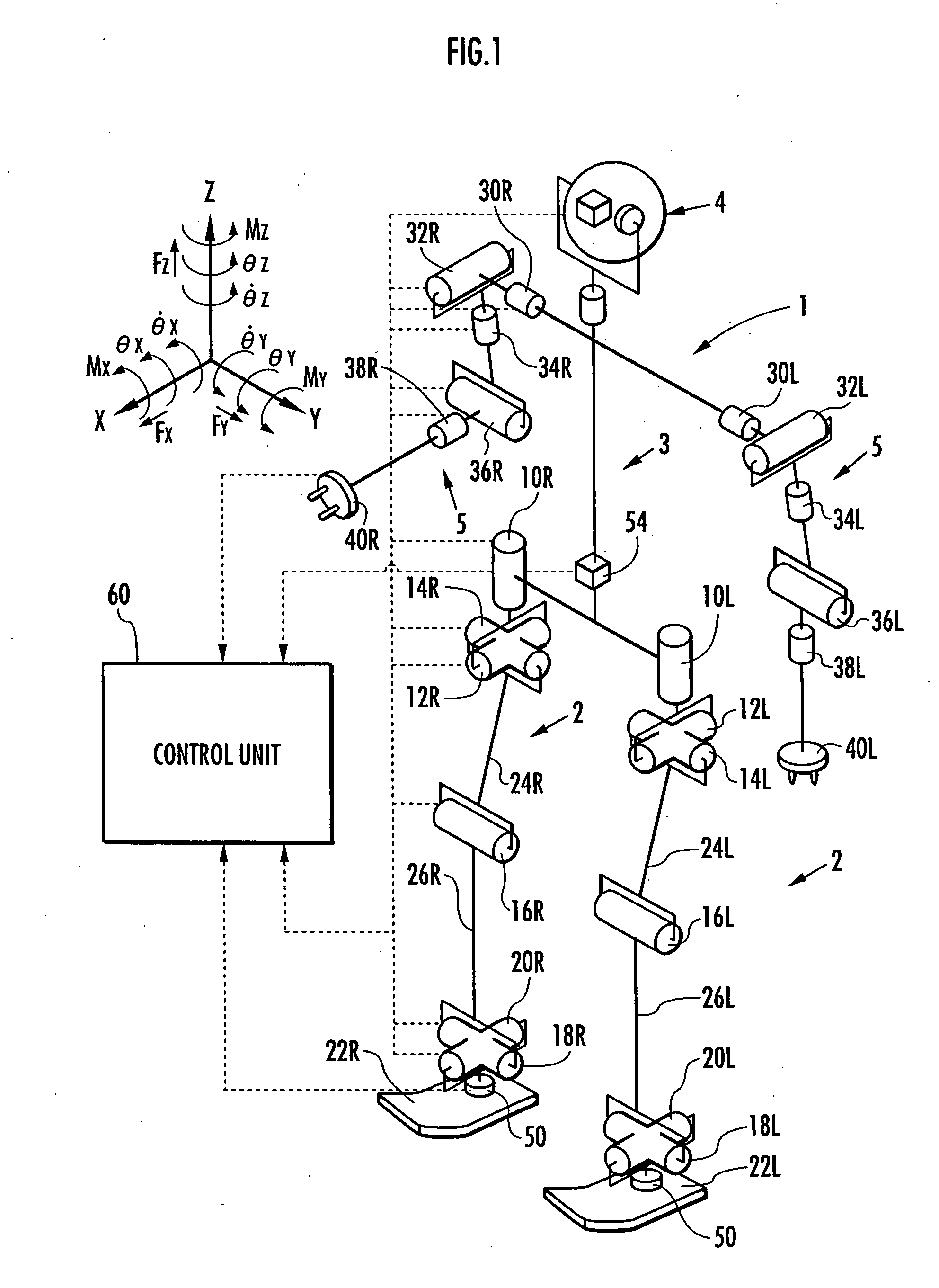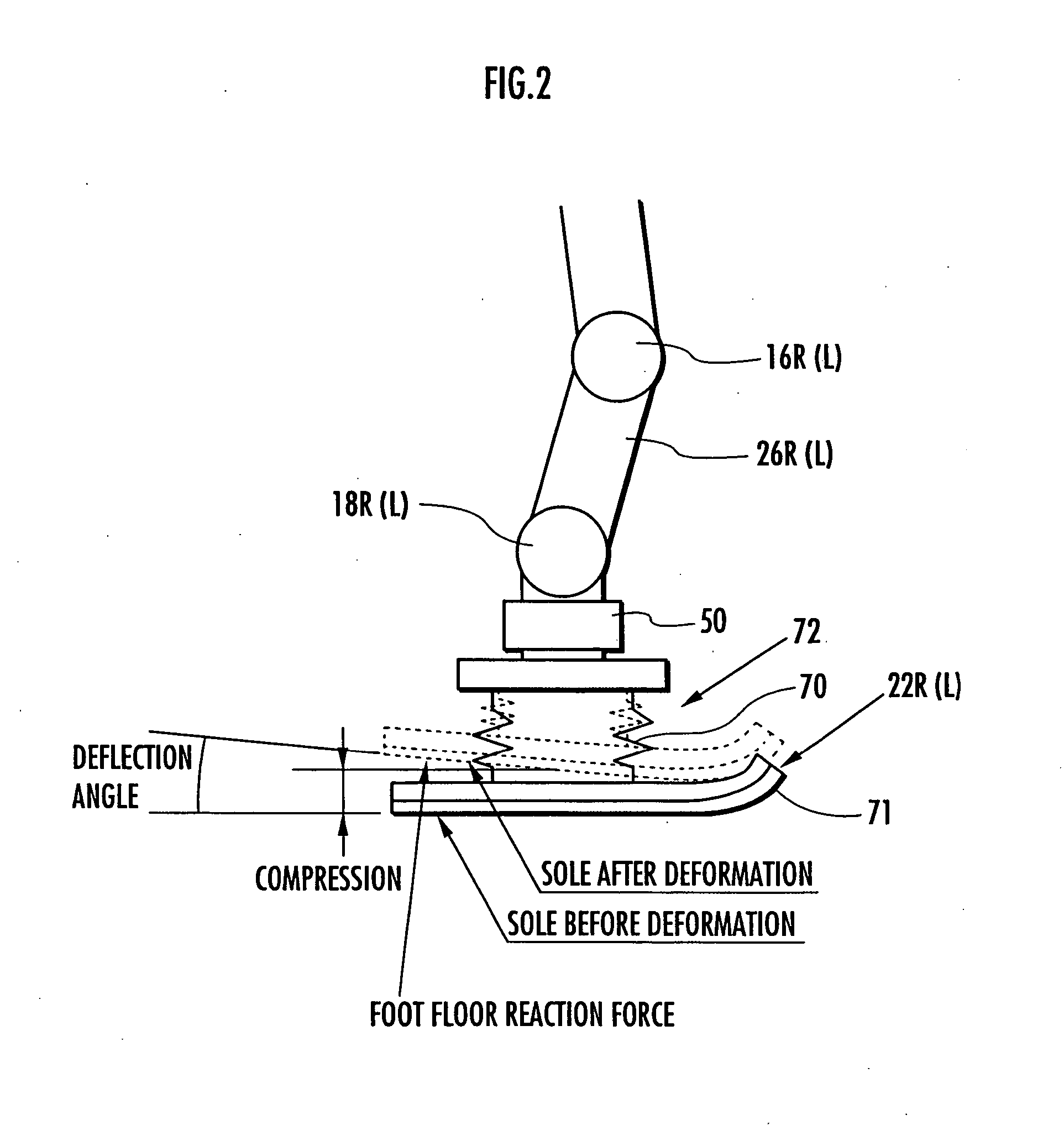Gait generation device for legged mobile robot
a mobile robot and gait generation technology, applied in the direction of electric programme control, program control, instruments, etc., can solve the problems of limited gait definition, inability to clearly distinguish between walking and running, and prone to misinterpretation of gait, so as to achieve reliable securing stability
- Summary
- Abstract
- Description
- Claims
- Application Information
AI Technical Summary
Benefits of technology
Problems solved by technology
Method used
Image
Examples
Embodiment Construction
[0105] Referring now to the accompanying drawings, a gait generating device of a legged mobile robot according to an embodiment of the present invention will be explained. As the legged mobile robot, a bipedal mobile robot will be used as examples.
[0106]FIG. 1 is a schematic diagram generally showing a bipedal mobile robot representing a legged mobile robot according to the embodiment.
[0107] As shown in the figure, a bipedal mobile robot (hereinafter referred to as “the robot”) 1 is equipped with a pair of right and left legs (leg links) 2, 2 provided such that they extend downward from a body (a base body of the robot 1) 3. The two legs 2, 2 share the same construction, each having six joints. The six joints of each leg are comprised of, in the following order from the body 3 side, joints 10R, 10L (symbols R and L meaning correspondence to the right leg and the left leg, respectively; the same will be applied hereinafter) for swinging (rotating) a hip (waist)(for rotating in a ya...
PUM
 Login to View More
Login to View More Abstract
Description
Claims
Application Information
 Login to View More
Login to View More - R&D
- Intellectual Property
- Life Sciences
- Materials
- Tech Scout
- Unparalleled Data Quality
- Higher Quality Content
- 60% Fewer Hallucinations
Browse by: Latest US Patents, China's latest patents, Technical Efficacy Thesaurus, Application Domain, Technology Topic, Popular Technical Reports.
© 2025 PatSnap. All rights reserved.Legal|Privacy policy|Modern Slavery Act Transparency Statement|Sitemap|About US| Contact US: help@patsnap.com



